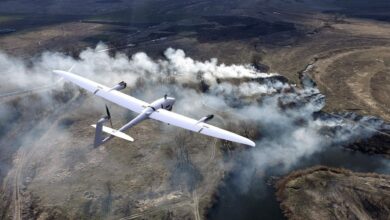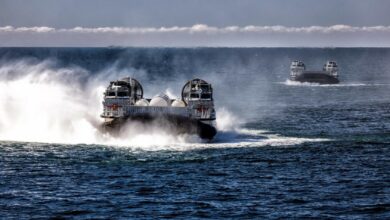US Navy Tests New Avoidance Tech for Safer Crewed/Uncrewed Teaming Flight
The US Navy has tested a first-of-its-kind detection and avoidance system for safer manned and unmanned teaming in congested airspace.
The system, named Guardian, uses ground-based sensors that provide precise prediction within a radius of up to 200 nautical miles for accurate communication between aerial units and ground control stations.
The test at the Naval Air Warfare Center Aircraft Division (NAWCAD) Patuxent River in Maryland included Uncrewed Air Test and Evaluation Squadron 24’s two Boeing Insitu RQ-21 Blackjack unmanned aircraft.
The vehicles were flown toward each other as the Guardian system monitored and calculated the approach.
Within 400 feet of contact, the system alerted the drone operators of a potential collision and recommended evasive maneuvers.
Guardian in Future Unmanned Aviation
Development of Guardian was initially partially undertaken with the US Army Redstone Test Center. It is currently funded by the Office of the Secretary of Defense Test Resource Management Center and the MQ-25 Stingray program.
The technology will be adapted to projects such as the MQ-4C Triton, MQ-8 Fire Scout, and other future uncrewed aerial system programs.
“Our single priority is getting Guardian ready for the future of Naval and Marine Corps unmanned aviation,” said Guardian Project Lead Kris Melton.
“We’re training our test pilots and fine-tuning the tech during this demo to prepare for the new carrier based unmanned air system, MQ-25’s, arrival to Pax but Stingray is just the beginning.”
The test team expects Naval Air Systems Command to provide certification of the Guardian system by late 2023.












